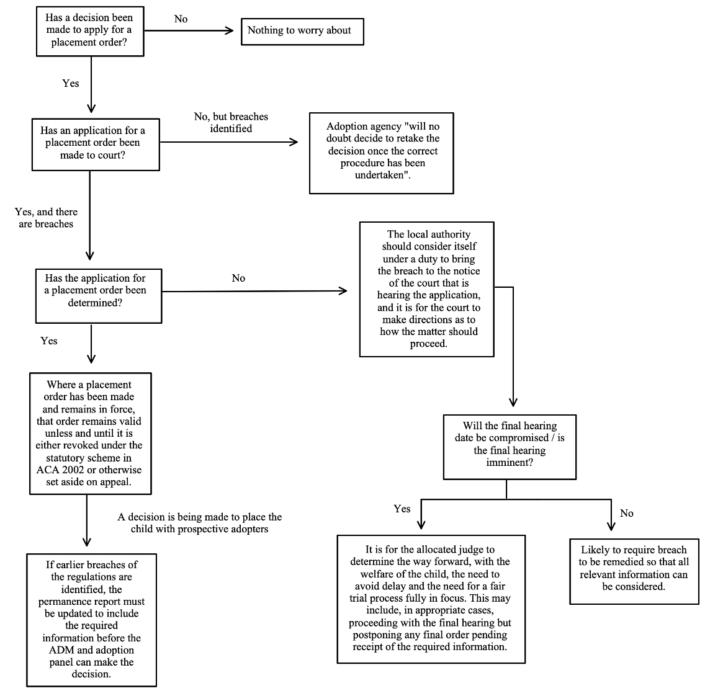Last week finally saw the handing down of the President’s judgment in the snappily-named case of Somerset County Council v NHS Somerset Clinical Commissioning Group and Others [2022] EWFC 31, which gives further guidance following the 2021 Somerset decision of Mrs Justice Roberts. For a 3-minute explanation of the original Somerset decision and the Adoption Agency Regulations 2005 [‘AAR’], read Lisa Edmunds’ article here.
Are declarations of lawfulness needed for existing orders?
The short answer is no.
Although Mrs Justice Roberts granted declaratory relief in relation to the primary cohort of 10 children, there remained a wider cohort that the local authority had not yet made Part 18 applications for. By the time of the final hearing, the parties had essentially agreed that the issue should not be dealt with under FPR 2010, Part 18, and SCC had conceded that the applications it had made for declaratory relief in relation to the wide cohort of children should be dismissed. The President accepted the position, stating that
“all court orders are valid and enforceable unless and until a court sets them aside. There is, therefore, no need for an application to be made under FPR 10, Part 18 seeking a declaration that existing orders are valid … Placement orders or adoption orders that have been made, but have not been set aside or varied by the court, are therefore valid and do not require further validation by a declaration or other means.”
But can an existing Placement or Adoption order be vulnerable to challenge if AAR 2005 has been breached?
The discussion of this question was a little more nuanced. The President (and other parties) accepted the statement of law as set out by the Secretary of State for Education, which can be summarised as follows:
i. There is a distinction between the local authority’s decision as an adoption agency to apply for a placement order or to place a child with prospective adopters, which may be a defective decision if taken in breach of one or more requirements of the AAR 2005, and any subsequent decision of the court to grant a placement or adoption order. The former may be a target for challenge by judicial review, but the latter is not.
ii. The constitutional theory of ‘the second actor’ applies, in that any unlawfulness (failure to abide by the regulations) by a first actor (the local authority) may invalidate their own acts (the decision to apply for a placement order), but will not directly invalidate the act of a second actor (the court in granting a placement order).
iii. There is a clear distinction between an order that is void for want of jurisdiction, and a voidable order made when the court clearly has jurisdiction but the process has been “infected by an error on the part of one of the parties”. The distinction applies in the context of adoption (Re F [1977] Fam 165). The court is not obliged to set aside orders that are voidable and not void.
iv. None of the gateway criteria in s.21 ACA 2002 to establish jurisdiction to make a placement order turn upon the local authority’s adherence to the requirements of the AAR 2005. The AAR 2005 do not go to the court’s jurisdiction to determine whether to make a placement order.
v. None of the statutory stipulations that establish the court’s jurisdiction to make an adoption order relate to compliance by a local authority with the requirements of the AAR 2005.
The President concluded that “a placement order or adoption order made in circumstances where there has been a breach by the adoption agency of the medical requirements of the AAR 2005 is not in consequence void. At its highest, it will, applying the approach of the Court of Appeal in Re F (Infants), be voidable and subject to challenge by way of appeal on the facts of any specific case.”
In relation to setting aside placement orders on appeal, the President has emphasised that any appeal is against the decision of the lower court to make the placement order. The challenge therefore could not be on the basis that the placement order was void as a result of the breach of the AAR 2005. Although it was argued that Re B (Placement Order) [2008] EWCA 835 may compel the court to set aside a placement order, this was not accepted and the President warned against potential dangers of Re B having universal application.
So what now?
Once again, the President has invited each local authority and adoption agency “to review its procedures and determine whether they have been operating in breach of the requirements of the AAR 2005”. Local authorities will be expected to be vigilant and to have ensured that the requirements of AAR 2005 have been complied with before a pending application is decided.
In terms of what local authorities need to do with cases that are or are soon to be before the court, the conclusions are summarised in the flowchart below:

Written by Jess Purchase, Consultant Barrister, Unit Chambers.

